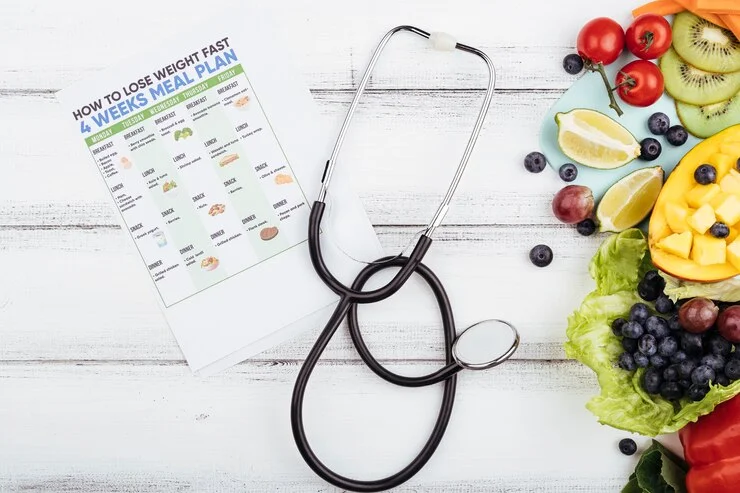How to Lower Diastolic Blood Pressure
Introduction to Lowering Diastolic Blood Pressure
In the quest for optimal health, understanding and managing diastolic blood pressure is crucial. Diastolic blood pressure, the lower number in a blood pressure reading, measures the pressure in your arteries when your heart is at rest between beats. While much emphasis is placed on systolic pressure, diastolic pressure is equally important for assessing cardiovascular health risks. High diastolic blood pressure can be a silent harbinger of heart disease, stroke, and other health complications.
This comprehensive guide delves into various strategies to lower diastolic blood pressure, offering hope and actionable advice for those looking to improve their health naturally. From dietary changes and specific exercises to stress management and lifestyle adjustments, we’ll explore how to tackle this condition head-on. Additionally, we’ll address common questions and concerns surrounding diastolic blood pressure, providing a holistic approach to cardiovascular wellness.
Whether you’re seeking to manage your blood pressure without medication or looking to supplement your current treatment plan, this post is designed to empower you with knowledge and tools to take control of your health. Let’s embark on this journey to understand diastolic blood pressure better and uncover effective methods to lower it, enhancing your quality of life.
Understanding Diastolic Blood Pressure

What Diastolic Blood Pressure Means
Diastolic blood pressure is the pressure exerted on the walls of the arteries when the heart is in its resting phase between beats. A normal diastolic blood pressure reading is below 80 mmHg. Readings ranging from 80 to 89 mmHg are considered prehypertension, and 90 mmHg or above are classified as hypertension. Maintaining diastolic pressure within the normal range is crucial for overall cardiovascular health, as prolonged elevation can strain the heart and arteries.
Causes of High Diastolic Blood Pressure

Several factors contribute to elevated diastolic blood pressure, including but not limited to:
- Genetics: A family history of hypertension can increase your risk.
- Age: The risk of high blood pressure increases as you age, with changes in blood vessel elasticity.
- Lifestyle Factors: Poor diet, lack of physical activity, excessive alcohol consumption, and smoking can all elevate blood pressure.
- Obesity: Excess body weight puts additional strain on the heart and arteries.
- Stress: Chronic stress can lead to temporary increases in blood pressure, contributing to long-term issues.
Risks Associated with High Diastolic Blood Pressure
High diastolic blood pressure can lead to various health complications, including:
- Heart Disease: Increased heart workload can lead to coronary artery disease and heart failure.
- Stroke: Elevated blood pressure can cause blood vessels in the brain to weaken or clog more easily.
- Kidney Damage: The kidneys rely on healthy blood vessels to function properly; high blood pressure can impair their ability to filter blood effectively.
- Vision Loss: High blood pressure can damage the delicate blood vessels in the eyes.
Understanding these fundamentals is the first step toward effective management. With this knowledge, individuals can take proactive measures to control their diastolic blood pressure, reducing their risk of serious health issues.
Natural Ways to Lower Diastolic Blood Pressure
Diet and Nutrition
Diastolic Blood Pressure Foods
A heart-healthy diet plays a pivotal role in managing diastolic blood pressure. Incorporating the following foods can significantly impact your blood pressure readings:
- Leafy Greens: Rich in potassium, these vegetables help your kidneys eliminate more sodium through your urine, which lowers your blood pressure.
- Berries: Blueberries, in particular, are high in naturally occurring chemicals known as flavonoids. One study found that ingesting these substances could help avoid hypertension.
- Beets: High in nitric oxide, which can help open your blood vessels and reduce blood pressure.
- Oats: Contains a type of fiber called beta-glucan, which has been shown to reduce blood pressure levels.
- Bananas: These are high in potassium, a key nutrient for managing blood pressure.
Diastolic Blood Pressure Reduction Diet Plan

Adopting a dietary approach to stop hypertension (DASH) is highly effective for lowering blood pressure. This plan emphasizes:
- Make sure to include a good amount of vegetables, fruits, and whole grains in your diet.
- To maintain a healthy diet, it is recommended to include fat-free or low-fat dairy products, fish, poultry, beans, nuts, and vegetable oils.
- It’s important to limit saturated fats found in foods like fatty meats, full-fat dairy products, and tropical oils such as coconut, palm kernel, and palm oils.
- Restricting sugar-sweetened beverages and sweets
By focusing on nutrient-rich foods and limiting salt and sugar intake, individuals can see significant improvements in their diastolic blood pressure.
Exercise

Diastolic Blood Pressure Exercises
Regular physical activity is crucial for lowering both systolic and diastolic blood pressure. Here are some exercises specifically aimed at reducing diastolic blood pressure:
- Cardiovascular Exercises: Activities like walking, jogging, cycling, swimming, or dancing can strengthen your heart and reduce arterial pressure.
- Strength Training: Lifting weights or doing bodyweight exercises can also help manage blood pressure when incorporated two days a week.
- Flexibility and Breathing Exercises: Practices like yoga and tai chi not only improve flexibility but also reduce stress and help lower blood pressure.
Consistency is key. Achieve a minimum of 150 minutes of moderate-intensity exercise or 75 minutes of high-intensity exercise per week.
Stress Management
Chronic stress is a contributor to high diastolic blood pressure. Managing stress through the following methods can have a positive effect:
- Meditation and Mindfulness: These practices can help calm your mind and reduce stress levels, positively impacting blood pressure.
- Deep Breathing Exercises: Techniques such as abdominal breathing and focused breathing can reduce stress and lower blood pressure.
- Time Management: Prioritizing tasks and managing your time effectively can reduce stress, helping to control blood pressure.
Weight Management
Losing weight can significantly reduce high blood pressure. Even losing a small amount of weight can have a significant impact. Some strategies to achieve this include:
- Following a healthy diet as outlined above
- Regular physical activity
- Keeping track of your weight and food intake
- Setting realistic weight loss goals
By addressing these key areas, individuals can effectively manage and lower their diastolic blood pressure naturally. Implementing lifestyle changes not only improves blood pressure but also enhances overall health and well-being.
Impact of Lifestyle Choices on Diastolic Blood Pressure
Alcohol Consumption

Alcohol and Diastolic Blood Pressure
Moderate to heavy alcohol consumption can have a significant impact on diastolic blood pressure. While moderate drinking might have a negligible or temporary effect, chronic consumption can lead to sustained high blood pressure. The American Heart Association suggests limiting alcohol intake to no more than two drinks per day for men and one drink per day for women to potentially avoid the blood pressure-raising effects of alcohol.
Salt Intake
Role of Salt Intake in Diastolic Blood Pressure
Salt (sodium chloride) intake is closely linked with blood pressure levels. High sodium consumption can cause the body to retain water, which may increase blood pressure. The DASH diet recommends reducing sodium intake to 2,300 milligrams a day or less, with an ideal limit of no more than 1,500 milligrams per day for most adults, especially those with high blood pressure.
Sleep Quality
The Impact of Sleep on Diastolic Blood Pressure
Good quality sleep is essential for maintaining healthy blood pressure. Sleep helps regulate stress hormones and helps your nervous system remain healthy. Poor sleep quality, especially conditions like sleep apnea, can lead to elevated blood pressure. Adults should aim for 7-9 hours of quality sleep per night to support overall heart health and maintain optimal blood pressure levels.
Smoking and Caffeine Consumption
Effects on Diastolic Blood Pressure
- Smoking: Nicotine in cigarettes raises blood pressure temporarily, but the chemicals in tobacco can damage your blood vessels, leading to an increase in blood pressure over time and making your heart work harder.
- Caffeine: The effect of caffeine on blood pressure is still debated, but it may cause a short-term spike in blood pressure. People with hypertension may need to limit caffeine intake.
Making informed choices about alcohol, salt, sleep, smoking, and caffeine can significantly affect diastolic blood pressure. Small, consistent changes in these areas can lead to substantial health benefits over time.
Quick Diastolic Blood Pressure Reduction Techniques

For those seeking immediate ways to lower diastolic blood pressure, certain techniques and supplements can offer quick relief:
- Deep Breathing and Meditation: Engaging in deep breathing exercises or meditation can help reduce stress-induced blood pressure spikes.
- Potassium-Rich Foods: Consuming potassium-rich foods like bananas, potatoes, and spinach can help balance out the sodium levels in your body, lowering blood pressure.
- Natural Supplements: Supplements such as magnesium, omega-3 fatty acids, and garlic have been shown to have a modest effect on lowering blood pressure. However, always contact with a healthcare physician before beginning any supplement program.
These techniques can provide temporary relief and are best used in conjunction with long-term lifestyle changes for sustained health benefits.
Medication and Clinical Approaches
For some individuals, lifestyle changes alone may not be sufficient to lower diastolic blood pressure to safe levels. In some circumstances, medication may be necessary:
- Common Medications: Medications such as diuretics, ACE inhibitors, angiotensin II receptor blockers (ARBs), calcium channel blockers, and beta-blockers are commonly prescribed to manage high blood pressure.
- Consulting Healthcare Professionals: It’s crucial to work with a healthcare provider to determine the most appropriate treatment plan, which may include one or more medications in addition to lifestyle changes.
Medications can be highly effective in managing high blood pressure when combined with positive lifestyle adjustments.
FAQs on Lowering Diastolic Blood Pressure
What causes high diastolic blood pressure?
High diastolic blood pressure can result from various factors, including unhealthy lifestyle choices (such as poor diet, lack of exercise, and excessive alcohol consumption), obesity, age, genetics, stress, and certain medical conditions. It’s crucial to identify the underlying causes to effectively manage and reduce high diastolic pressure.
How can I reduce my diastolic blood pressure naturally?
Lowering diastolic blood pressure naturally involves making lifestyle changes such as adopting a heart-healthy diet (rich in fruits, vegetables, whole grains, and low in saturated fats and sodium), regular physical activity, managing stress through relaxation techniques like meditation or yoga, maintaining a healthy weight, limiting alcohol intake, and avoiding smoking.
What foods help lower diastolic blood pressure?
Foods that can help lower diastolic blood pressure include leafy greens, berries, oats, beets, bananas, and other potassium-rich foods. These foods can help improve heart health and reduce blood pressure levels by enhancing kidney function, improving arterial health, and balancing sodium levels in the body.
Is exercise effective in lowering diastolic blood pressure?
Yes, exercise is highly effective in lowering diastolic blood pressure. Regular physical activity, especially aerobic exercises like walking, jogging, cycling, and swimming, can help reduce blood pressure by strengthening the heart, improving circulation, and reducing stress. Incorporating strength training exercises twice a week can also contribute to blood pressure management.
How does stress affect diastolic blood pressure?
Stress can cause temporary spikes in diastolic blood pressure due to the release of stress hormones, which increase heart rate and constrict blood vessels. Chronic stress can lead to sustained high blood pressure, making stress management techniques crucial for individuals looking to lower their diastolic blood pressure.
What medications are typically prescribed to lower diastolic blood pressure?
Medications commonly prescribed to lower diastolic blood pressure include diuretics, ACE inhibitors, angiotensin II receptor blockers (ARBs), calcium channel blockers, and beta-blockers. The choice of medication depends on the individual’s overall health, the severity of hypertension, and any underlying conditions.
Can weight loss help reduce diastolic blood pressure?
Yes, weight loss can significantly reduce diastolic blood pressure. Losing even a small amount of weight if you’re overweight or obese can help lower blood pressure levels. A healthy diet and regular exercise are key strategies for achieving and maintaining a healthy weight.
How does alcohol consumption affect diastolic blood pressure?
Moderate to heavy alcohol consumption can raise diastolic blood pressure. Reducing alcohol intake to recommended levels or abstaining altogether can help lower blood pressure and reduce the risk of hypertension.
What role does salt intake play in diastolic blood pressure?
Excessive salt intake can increase blood pressure by holding excess fluid in the body, placing an additional burden on the heart. Reducing salt intake to recommended levels can help manage diastolic blood pressure effectively.
How quickly can I expect to lower my diastolic blood pressure?
The time frame for lowering diastolic blood pressure can vary depending on individual health factors, the extent of lifestyle changes, and whether medication is used. Some individuals may see improvements within a few weeks, while for others, it may take longer. Consistency in applying healthy lifestyle changes is key to achieving and maintaining lower blood pressure.
Conclusion
Lowering diastolic blood pressure is a critical component of maintaining cardiovascular health and preventing related diseases. Through a combination of dietary changes, regular exercise, stress management, and, if necessary, medication, individuals can effectively manage their blood pressure. It’s important to consult with healthcare professionals to develop a personalized plan that addresses specific health needs and goals.
This guide has explored the multifaceted approach to lowering diastolic blood pressure, offering actionable advice and answering common questions. By making informed lifestyle choices and seeking professional guidance, you can take control of your blood pressure and lead a healthier, more vibrant life.
Should you have further questions or need personalized advice, consulting with a healthcare provider is always recommended.







